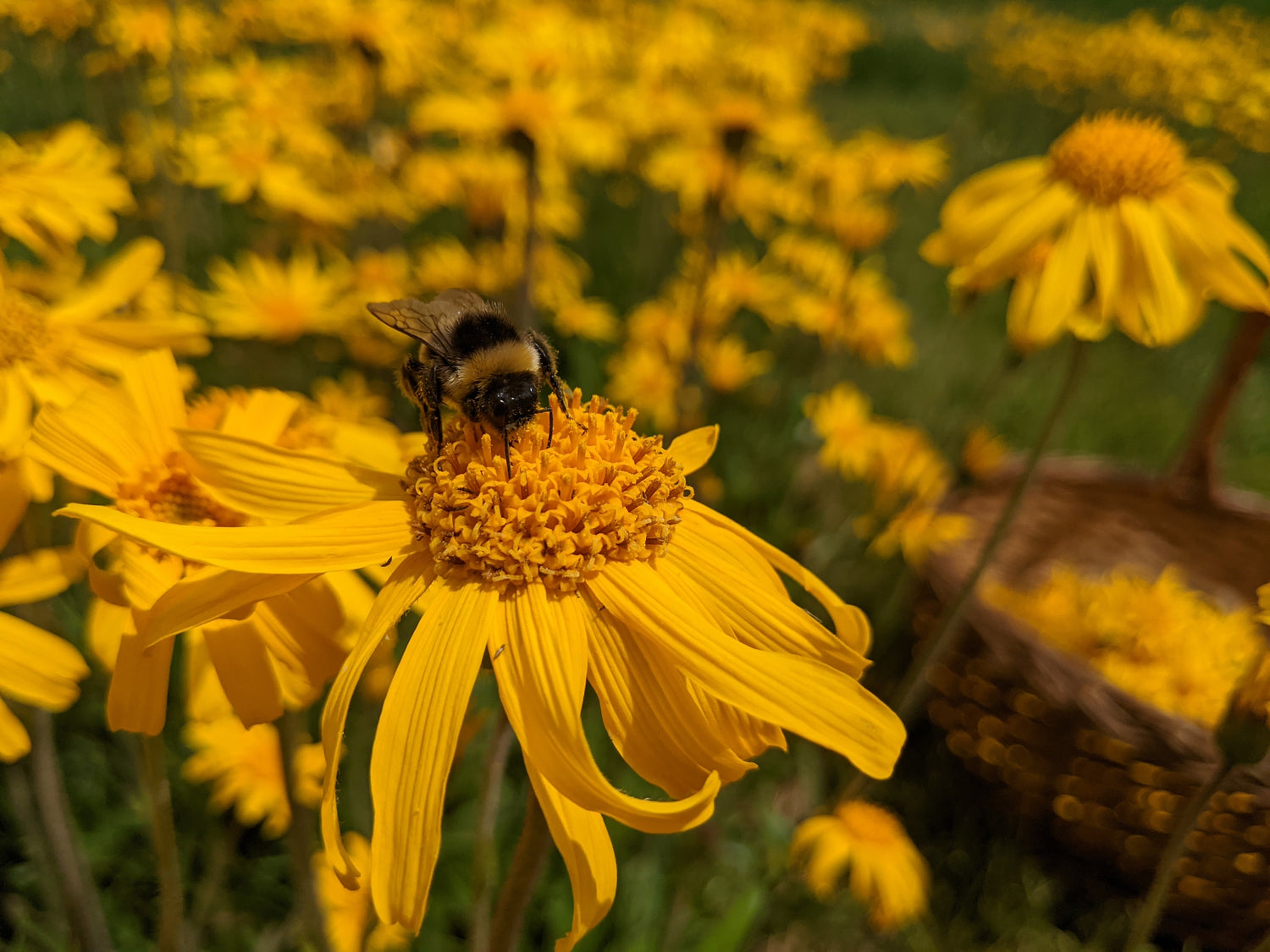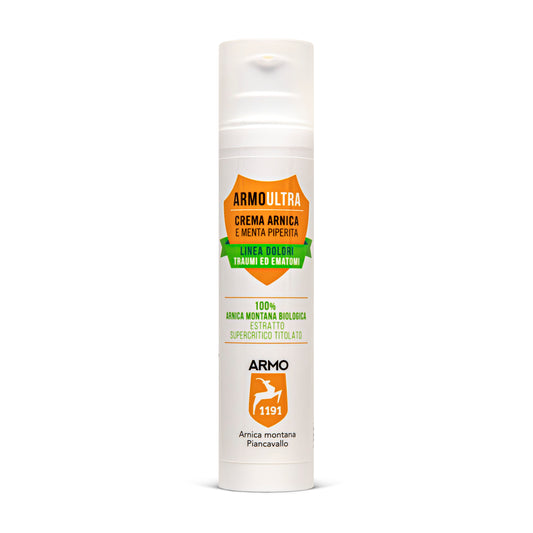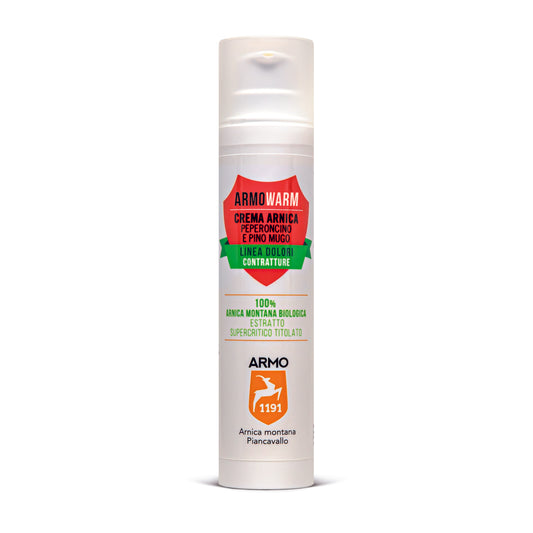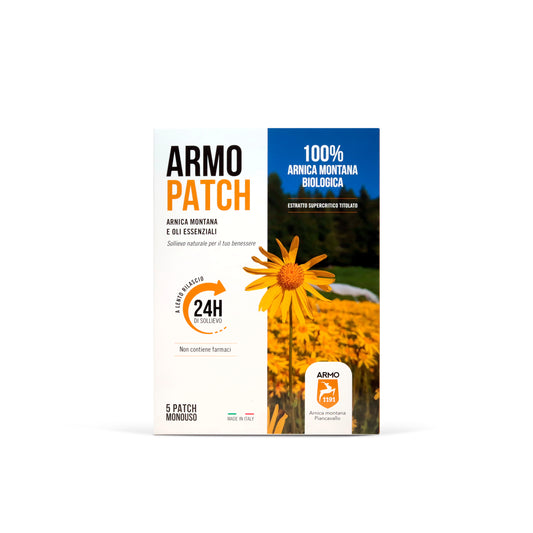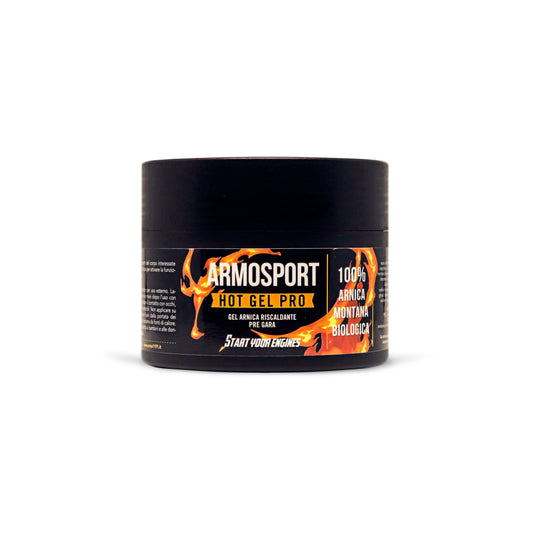The plant in detail
Mountain Arnica and its medicinal properties
Mountain Arnica (Arnica montana L.) is a plurennial plant which belongs to the Asteraceae family. In Italy, it grows spontaneously on the Alps and on the Tuscan-Emilian Apennines from a height of 500 to 2200 metres. It is widespread throughout Europe, except for the British Isles.
It is easily recognizable during the summer season for its orange-yellow flowers, it grows on the mountains on acidic or subacid soils, in the rhododendron heaths and in the arid grasslands.
The people of the European Alpine Arc have always known mountain Arnica as a natural remedy, especially for traumas and muscular and joint pains.
Over the last 30 years, scientific research has identified the active substances contained mainly in the flowers and to a lesser extent in the stems, leaves and roots and has conducted several investigations into their pharmacological activities.
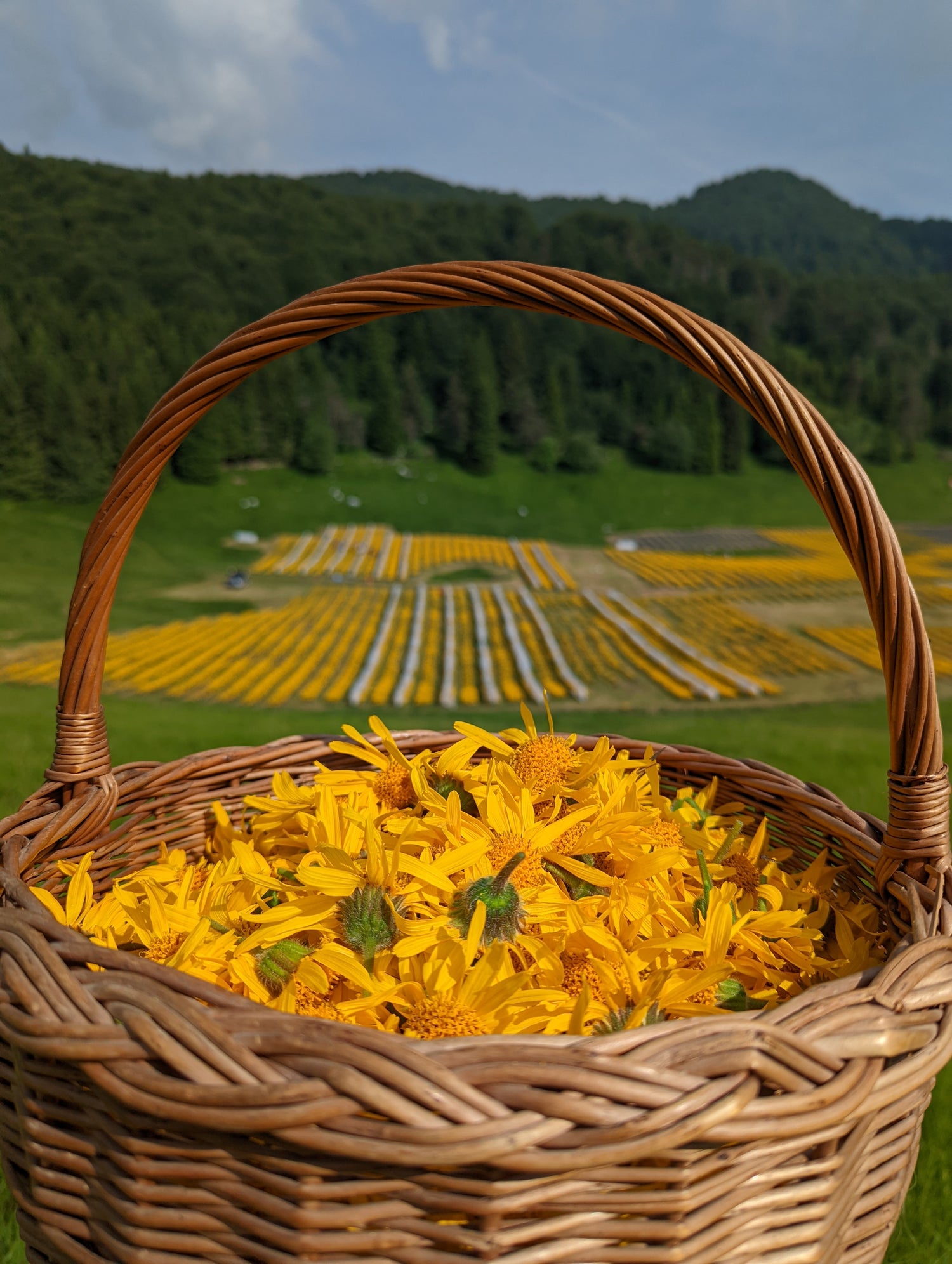
Active principles of the mountain Arnica extract
Flavonoid glucosides (isoquercetin, coumarins, astragalin, luteolin-7-glucoside): affect the circulation by causing vasoconstriction and an increase in blood pressure;
Arnicin: glycoside which has a camphor-like action;
Carotenoids: molecules with an antioxidant action;
Helenalin and Dihydrohelenalin: these are the sesquiterpene lactones responsible for most of the therapeutic activities of Arnica;
Terpenes, phytosterols, polysaccharides;
Essential oils: thymol, known for its fungicidal and preservative properties but also for its anti- inflammatory effect is mainly contained.
The substances that most characterise mountain Arnica are the sesquiterpene lactones contained in its flowers. Among these, analgesic and anti-inflammatory properties are attributed to Helenalin and, to a lesser extent, Dihydrohelenalin.
Studies show that the presence of these molecules is influenced by the climate, the altitude and the time of harvest, the cultivation planted and the variability of the wild populations.
In addition to sesquiterpene lactones, as many as 150 active therapeutic substances have been identified to date in Arnica, such as flavonoids, essential oils, carotenoids and caffeic acid. Mountain Arnica is known for its numerous activities, including its anti-tumoral, anti-fungal, anti-bacterial and antioxidant ones.
However, a serious obstacle to the development of Arnica-based medicines is the toxicity of the plant if ingested, particularly of the helenalin contained. For internal use, Arnica is widely used only in homeopathy, provided it is widely diluted.
For external topical use, however, there are no contraindications, apart from the recommendation to not use it on injured skin or bleeding wounds.
There are several clinical studies on the efficacy of mountain Arnica and publications on the methodological quality of these studies are also available. For external topical use, studies confirm that mountain Arnica is a valuable aid in cases of bruising, contractures, fatigue, and muscular pain.
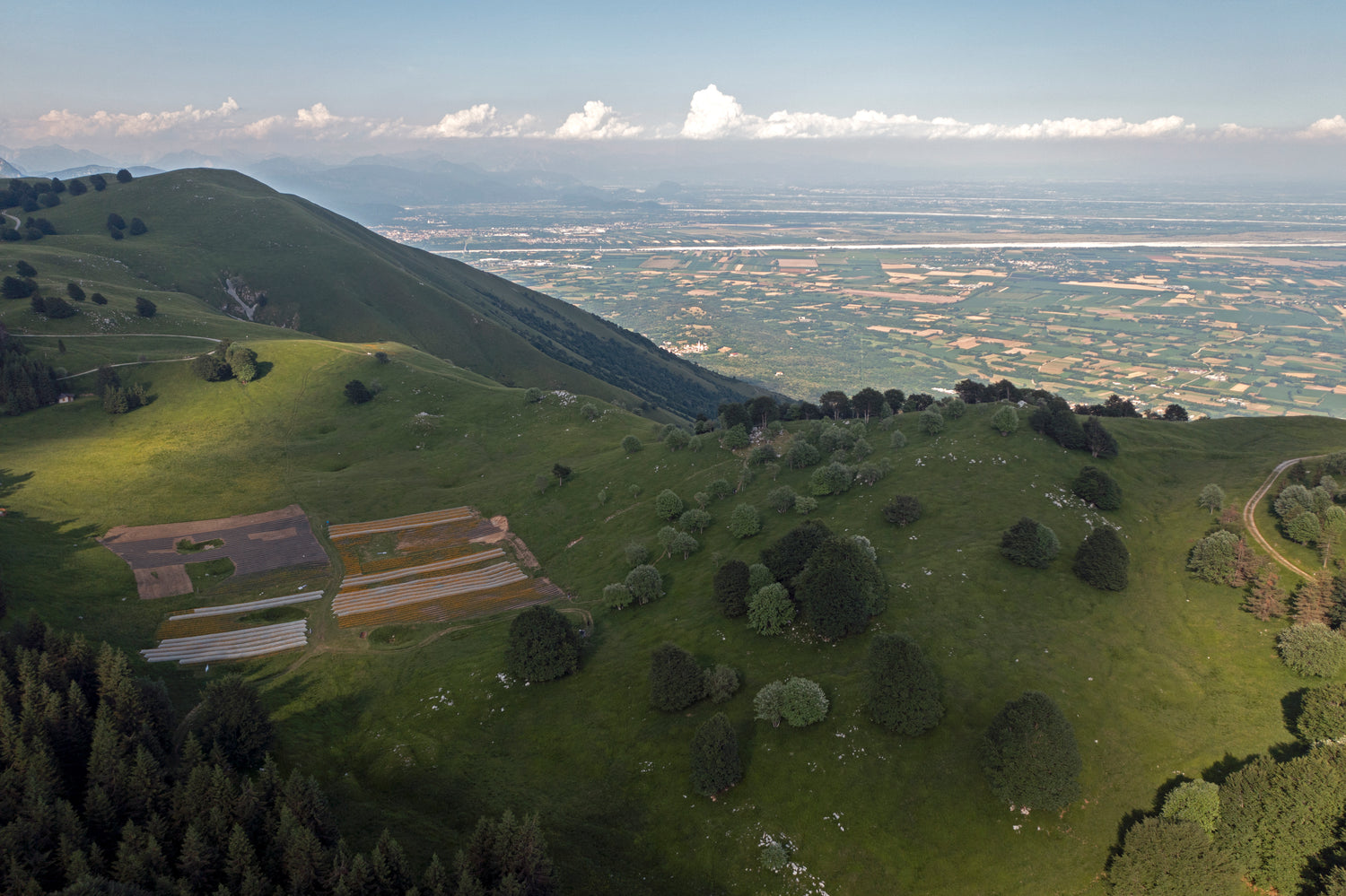
From our mountains to your home
ARMO1191 is a commitment to you and to the mountain environment. We use all the Arnica necessary in our products so as you can benefit from its active ingredients. We do not use cheaper substitutes, mild concentrations, nor do we take synthetic shortcuts, and we do not promise panaceas.
Cultivar
Mountain Arnica is a pluriannual crop, after four to five years the plants stop flowering and must be replaced. Sowing takes place in the nursery between February and March, and the seedlings are replanted by hand between May and June.
We use the ARBO cultivar, selected in Germany. In the first year the plant takes root and develops its foliage. Flowering takes place in the second year between June and July.
Our plants produce a total of 40 to 90 flowers at peak flowering time (usually in the third year).
We hand-pick the fresh flowers at their optimum balsamic time and dry them naturally. We extract the active ingredients of the Arnica plant from the dried flowers.
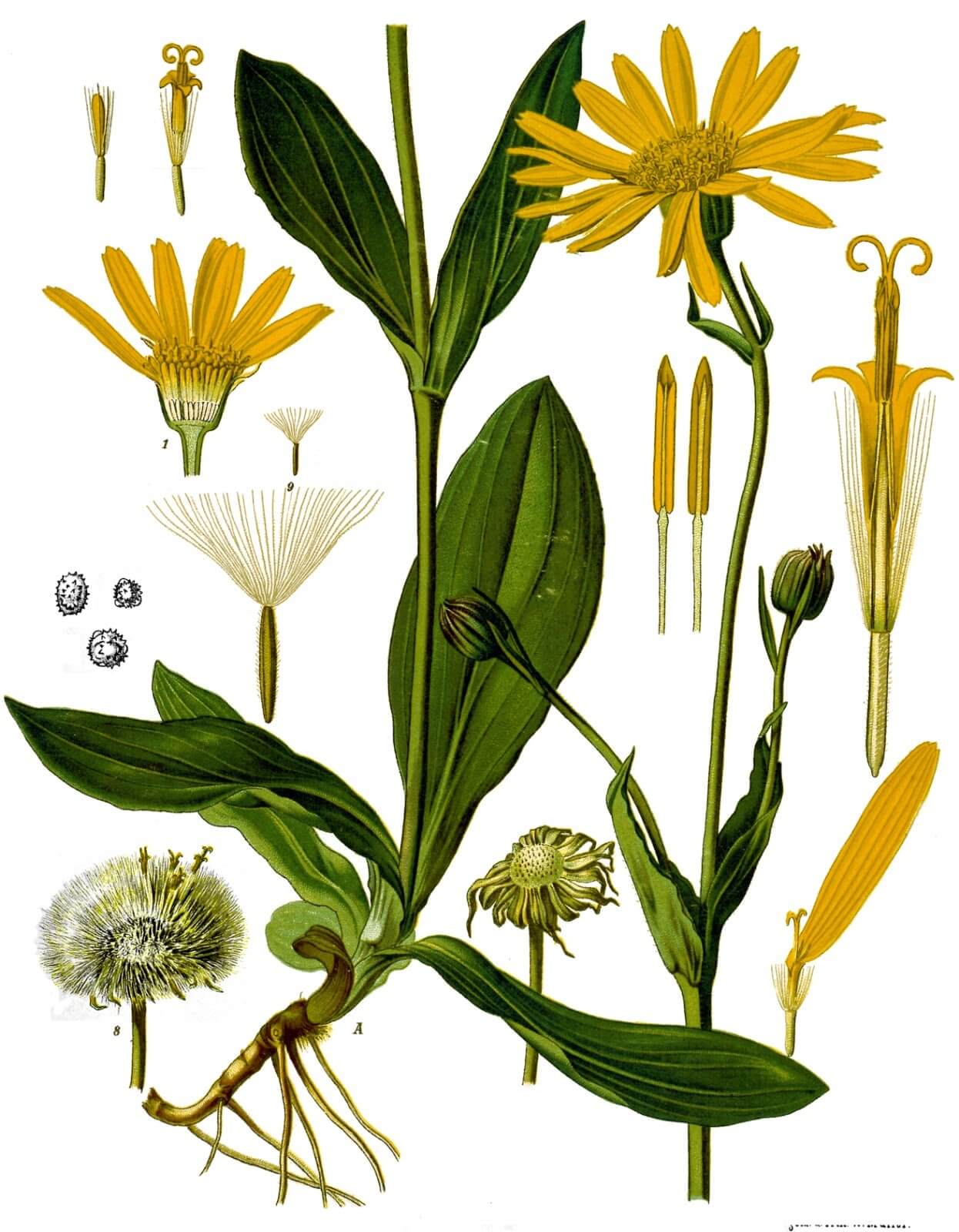
Botany
Mountain Arnica is a rhizomatous herbaceous perennial species, it is from 20 to 50 cm tall. The basal leaves are lanceolate and arranged in a cross. The stem erects individually or with 1-2 pairs of opposite branches which have 1-2 pairs of cauline leaves.
The paired leaves on the stem are one of the characteristics that clearly distinguish it from other species of the same family and that the inexperienced hiker may confuse.
The flower heads have outer ligulate female flowers and inner tubular hermaphrodite flowers. Arnica flowers from June to August.
At risk of extinction
The vast majority of mountain Arnica found in products on the market comes from spontaneous harvesting. Some estimates specify that the requirement of mountain Arnica is around 50-80 tonnes per year.
Unfortunately, in addition to the unsustainable volumes of spontaneous harvesting, its natural habitats are disappearing due to the abandonment of pastures to brambles, the nitrogenous fertilisation of meadows and the planting of crops. According to recent studies, climate change is also causing a reduction in flowering.
There are countries which have banned wild harvesting, others that have tried to regulate it, and regions where there are no rules.
In Germany, for example - a country where harvesting has been banned for years and which is a major importer of dried products - efforts are being made to reintroduce wild populations and to raise public awareness about the conservation of a plant that is becoming a symbol of a more general concern for the quality of the habitats.
Moreover, the first experiments which refer to Arnica cultivation began in Germany in the late 1980s and early 1990s, with studies and contributions from research institutes and companies in Germany, Scotland, New Zealand, Canada, Poland, and Spain.
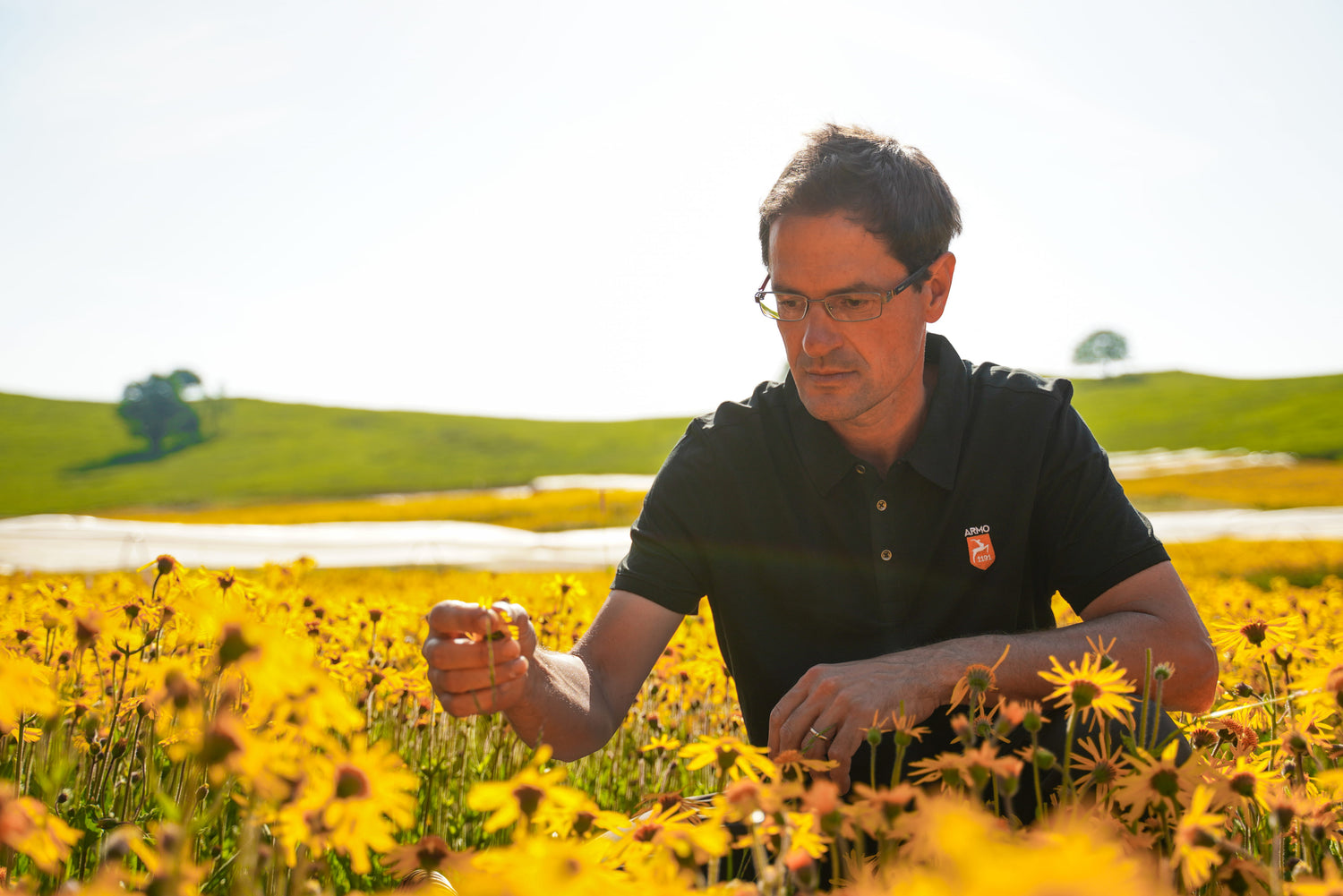
Is Arnica now at risk of extinction?
According to the IUCN (International Union for the Conservation of Nature), this species is not yet at threat on a continental scale, but in many European countries its population is declining, in some it is even completely or almost extinct.
The European Union, through the Habitats Directive 92/43/EEC, has included mountain Arnica in Annex V, the list of species for which Member States are recommended to take measures to limit wild harvesting and promote the conservation of the species.
We cultivate it
We cultivate mountain Arnica to preserve the natural habitats and to enable everyone to benefit from its natural anti-inflammatory and pain-relieving properties.
The acidified soils, although with a calcareous substratum, of the Piancavallo (PN) plateau are giving good results in terms of yield and above all quality.
Why have people been talking about cultivating mountain Arnica for over thirty years, though this has not yet become widespread? Because cultivating is expensive and very risky.
Seed germination is very low, plant mortality is high, and its productivity is rather unpredictable due to the variability of the soil and the seasons.
The costs of running an organic crop are very high, especially for the hand-harvesting of the heads and the cleansing from the weeds. Given these aspects, the return for the grower is very low.
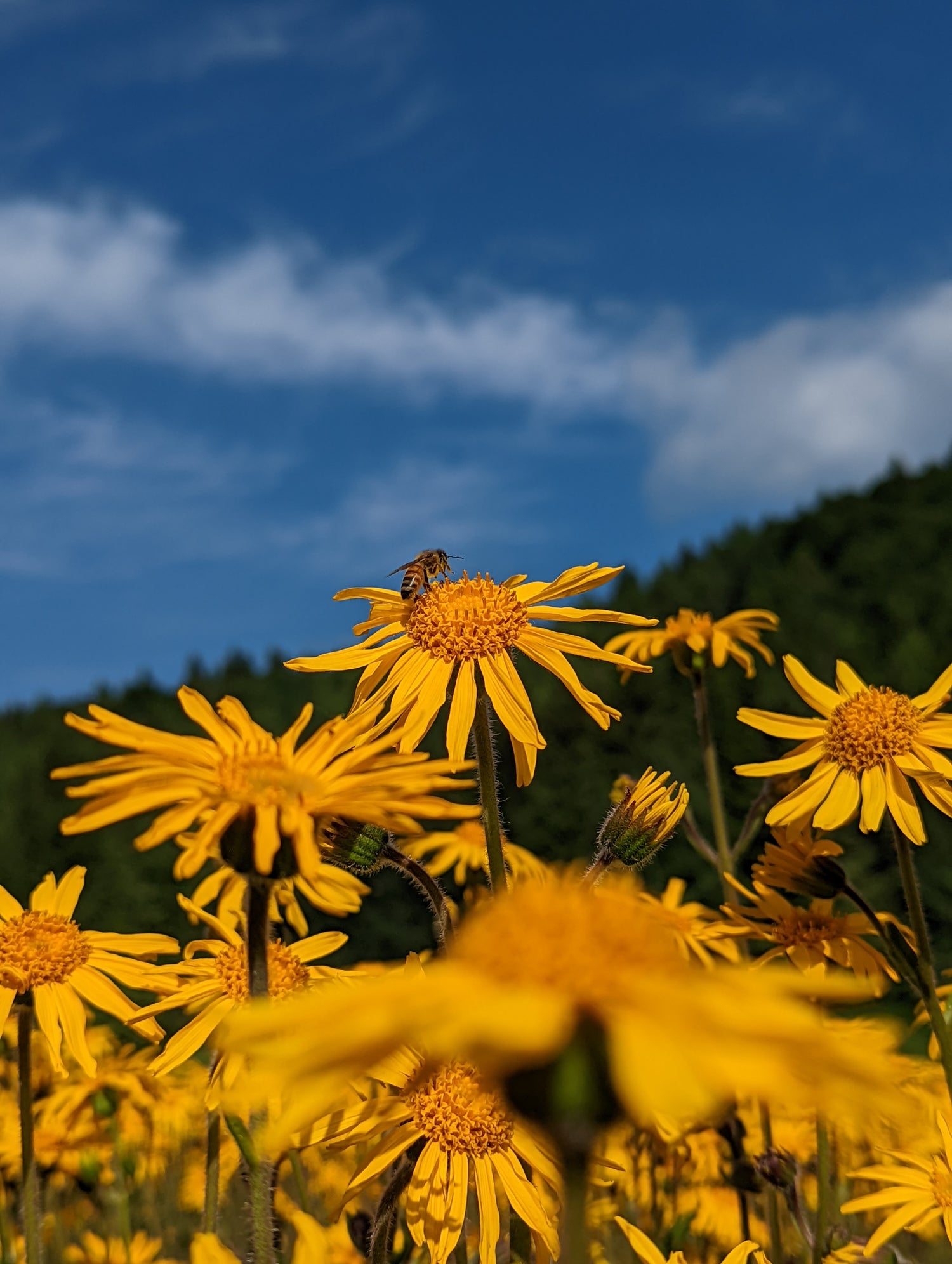
Sustainable agriculture
We follow the process of organic agriculture (operator IT BIO 006 E3139) and only use our hands and mulching cloth to protect the crop from the weeds.
We coexist with the natural parasites found in Arnica, such as Tephrites arnica and powdery mildew to avoid disturbing the balance of the ecosystem in which we live. Cultivating in a context of biodiversity is currently the best defence for Arnica.
Various genera and species
Besides spontaneous harvesting, Arnica cultivating has to deal with other competitors such as other species of the Arnica genus or even plants of a different genus with similar properties.
Mountain Arnica is often substituted with Arnica chamissonis, its American sister species, which is easier to grow but poorer in active ingredients.
There is also a subspecies of mountain Arnica which grows at lower altitudes in Spain, Atlantic Mountain Arnica, which is widely used but contains less helenalin, the lactone mainly responsible for its anti-inflammatory properties.
Even easier for many formulators is the use in extracts of the so-called Mexican Arnica, a plant which remotely resembles Arnica but that does not even belong to its genus. Its scientific name is Heteroteca inoluloides and it grows in Mexico. Being called “Arnica” in the vernacular, allows marketers to call products by this name unless the correct scientific name is given in the INCI (list of ingredients).
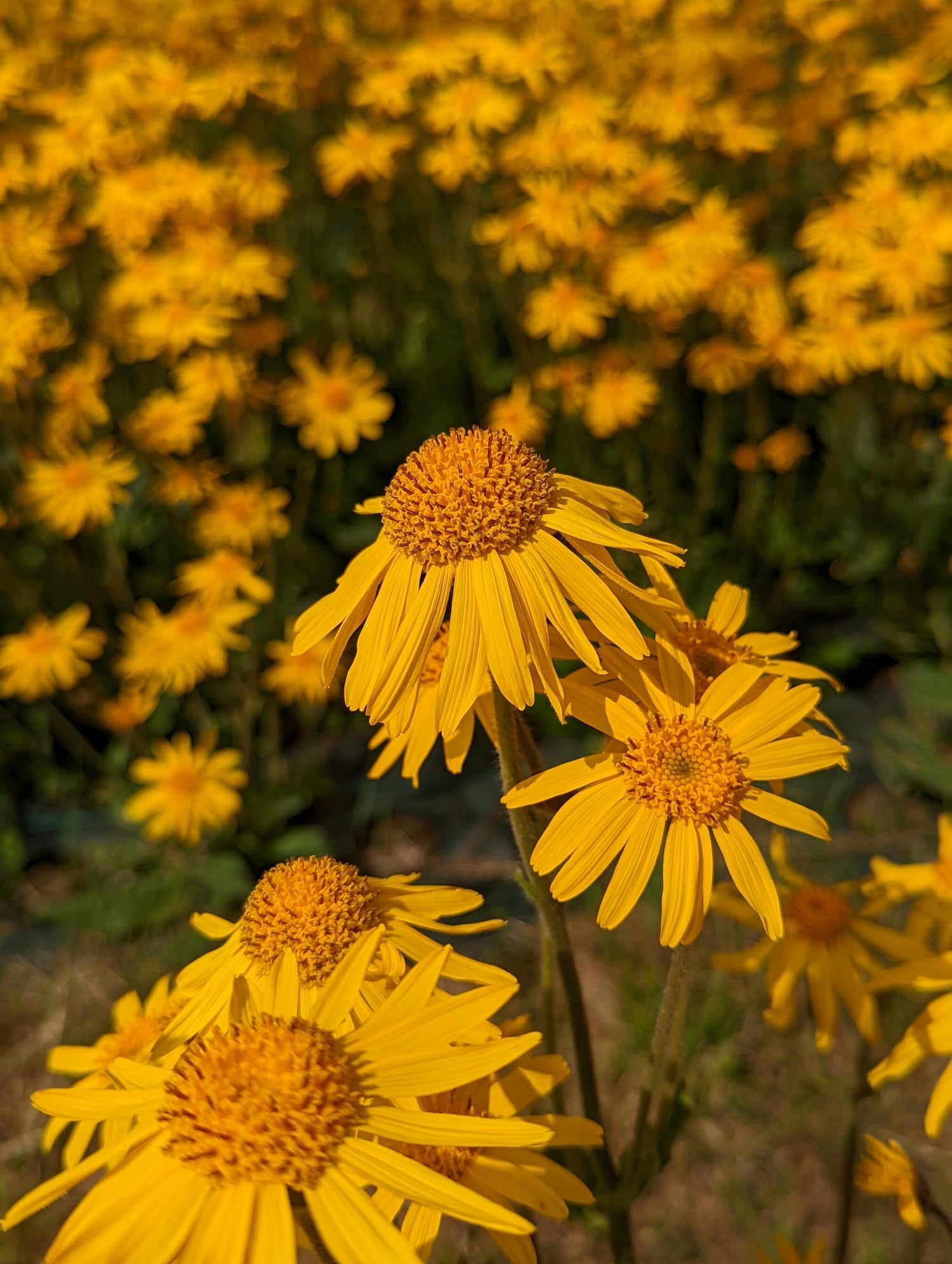
Did you know that...
• The name ARNICA probably derives from the Greek ptarmike = to sneeze, because the root and flowers ‘induce sneezing‘, as they contain substances capable of irritating the nasal mucosa, causing repeated sneezing. In Venetian and Lombard dialect it was known as the “starnudela herb” - “sneezing herb”.
• There are many vernacular names for Arnica, they go from “blessed herb of the mountains” to ‘fall grass‘ (in German Fallkraut) to “mountain tobacco” or “Vosges tobacco”, from the French massif where it grew wild in large quantities, as the dried leaves were often used as snuff by mountain dwellers. It is also in connection to this use that it was called “starnudela herb” - “sneezing herb”.
• Unlike other medicinal plants, Arnica was not used in antiquity. It was Hildegard of Bingen, a Benedictine nun who lived between 1098 and 1179, who first mentioned it in her book Physica as a useful plant for the treatment of bruises and ecchymoses.
• There are 32 species that belong to the Arnica genus. There are several flowers like Arnica that however belong to other species such as Senecio, Doronicum, etc.
• Arnica is toxic and should not be ingested, but only used externally. The flower heads and the rhizome are majorly poisonous, and the symptoms of intoxication are many: nausea, vomit, dysentery, dizziness, tachycardia, and even cardiovascular collapse. The plant was once used as a poison due to these properties.
• The many uses of Arnica in Traumatology: treatment of contusions, sprains, traumas, haematomas, oedemas, and post-traumatic inflammation. Rheumatology: joint pain, muscle pain, arthrosis, arthritis, tendonitis. Phlebology: venous disorders and phlebitis, venous insufficiency, and varicose veins. Dermatology: treatment of insect bites, furuncles, inflammatory dermatoses.
Discover our products
-
ARMOULTRA - Mountain Arnica and Peppermint cream
Regular price From €4,00 EURRegular priceUnit price per -
ARMOWARM - Mountain Arnica chilli pepper and mountain pine cream
Regular price From €4,00 EURRegular priceUnit price per -
ARMOPATCH - Adhesive strips with Mountain Arnica and essential oils
Regular price €16,00 EURRegular priceUnit price per -
ARMOSPORT - Warming Mountain Arnica, Chilli Pepper, Camphor and Juniper Gel
Regular price From €3,50 EURRegular priceUnit price per

